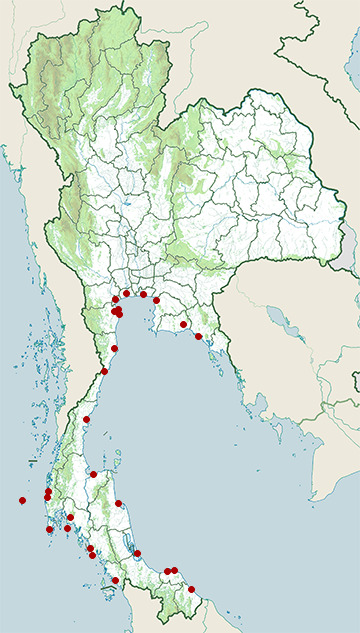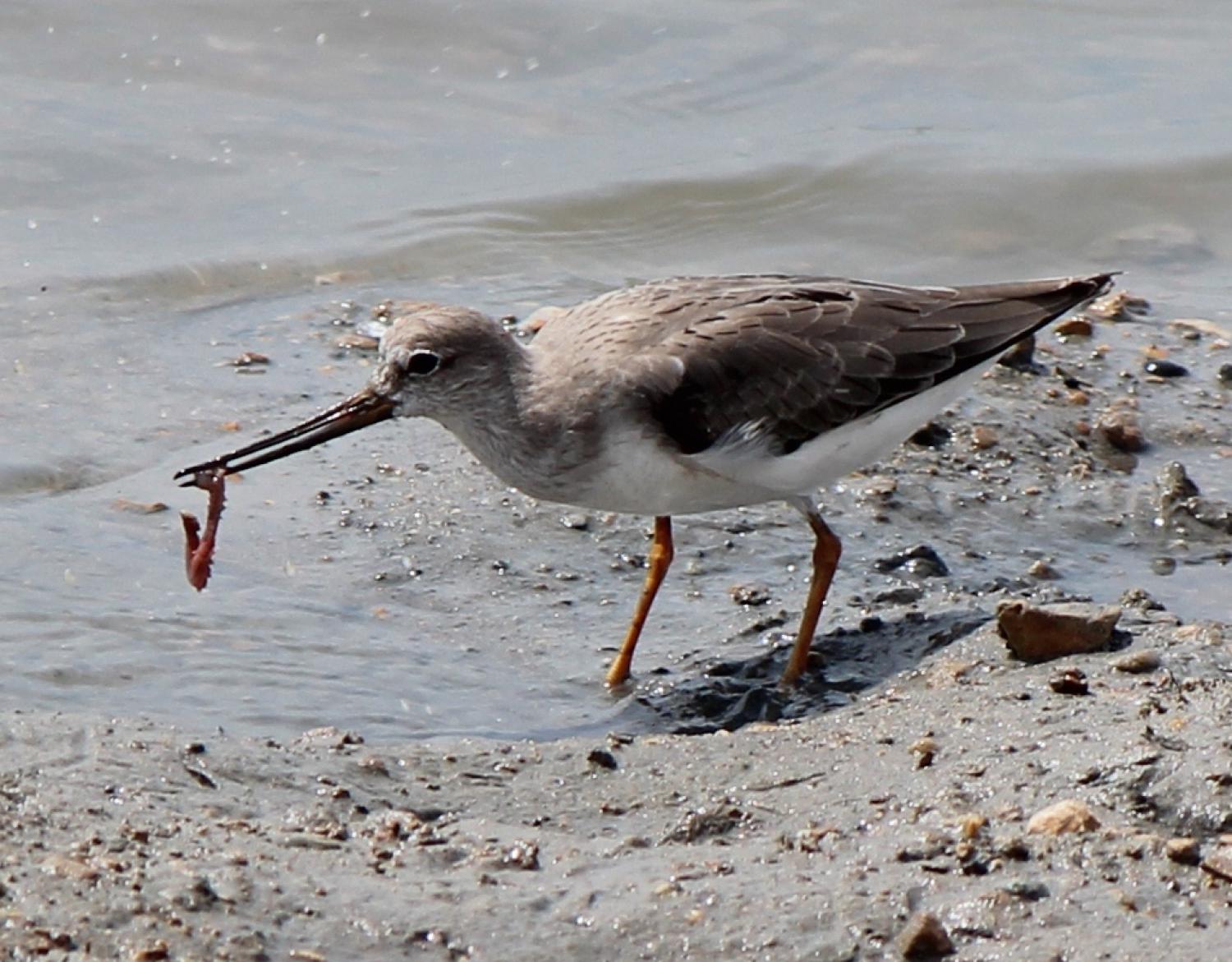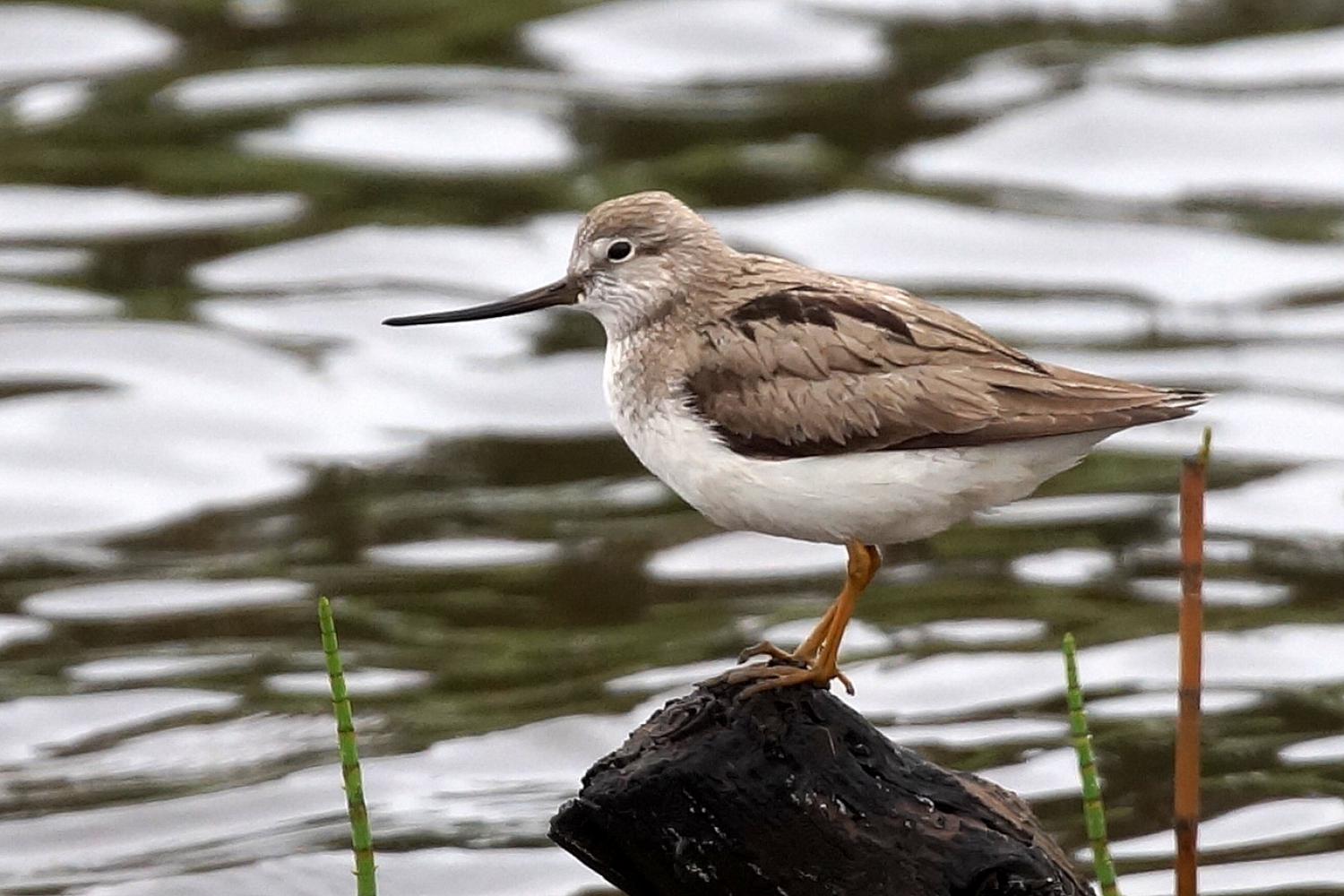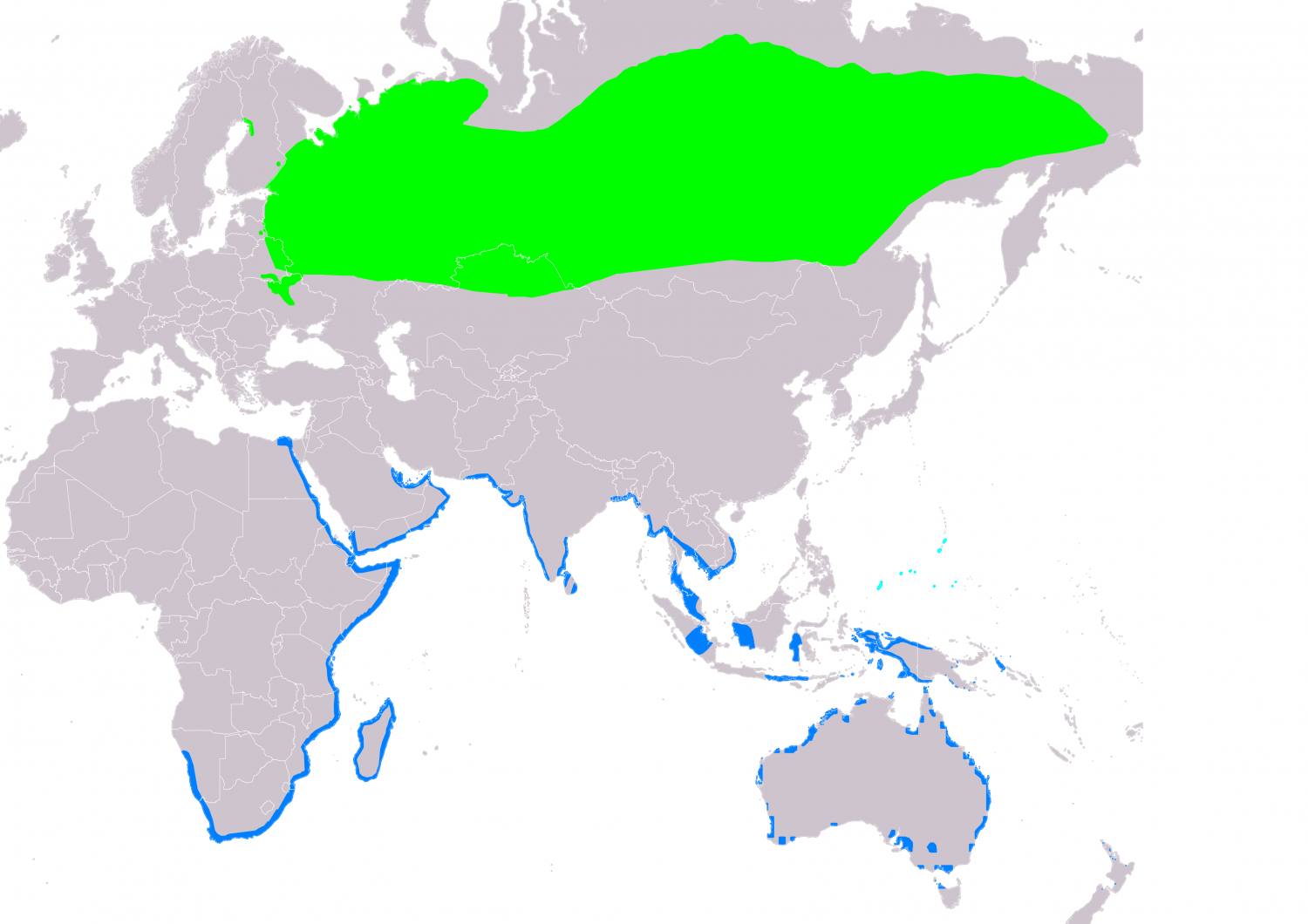Species of Thailand
Terek sandpiper
Xenus cinereus
Johann Anton Güldenstädt, 1775
In Thai: นกชายเลนปากแอ่น
The Terek sandpiper (Xenus cinereus) is a small migratory Palearctic wader species and is the only member of the genus Xenus. It is named after the Terek River which flows into the west of the Caspian Sea, as it was first observed around this area. The genus name Xenus is from Ancient Greek xenos stranger, and cinereus is Latin for "ash-grey" from cinis, cineris, "ashes".
Description and systematics
Slightly larger than the common sandpiper at 22 – 25 cm length, its long upcurved bill – somewhat reminiscent of an avocet's, but not as strongly curved – makes it very distinctive. As the scientific specific name implies, this wader has a grey back, face and breast in all plumages; a white supercilium may appear more or less distinct. The belly is whitish and the feet yellow; the bill has a yellowish base, with the rest being black.
The call is a high whistle.
Among the Scolopacidae, Xenus is part of the shank-tattler-phalarope clade and less closely related to the calidrid sandpipers. Based on the degree of DNA sequence divergence and putative shank and phalarope fossils from around the Oligocene/Miocene boundary some 23–22 million years ago, the Terek sandpiper presumably diverged from their relatives in the Late Oligocene. Given the numerous basal fossils of the group found in Eurasia it is likely that the Terek sandpiper lineage originated there, possibly by being isolated as the remains of the Turgai Sea dried up, which happened just around this time.
Distribution and ecology
This bird breeds near water in the taiga from Finland through northern Siberia to the Kolyma River, and migrate south in winter to tropical coasts in east Africa, south Asia and Australia, usually preferring muddy areas. It is a rare vagrant in western Europe, and particularly in autumn it is sometimes seen passing through the Marianas on migration; on Palau, further off its usual migration route, it is decidedly uncommon on the other hand. Almost annually and apparently more and more often in recent times, a few birds stray to Alaska and the Aleutian and Pribilof Islands. Every few years, individual vagrants are recorded in the Neotropics, where they arrive either as migrating birds from Africa, or as North American strays accompanying local waders south for winter. Such vagrants have been recorded as far south as Argentina.
The overall genetic variation in Terek sandpipers across their range is low, with some evidence of contractions followed by expansion. Although the geographically isolated Dniephe River population in Eastern Europe does show significant genetic differentiation.
It feeds in a distinctive and very active way, chasing insects and other mobile prey, and sometimes then running to the water's edge to wash its catch.
It lays three or four eggs in a lined ground scrape.
The Terek sandpiper likes to associate with ruddy turnstones (Arenaria interpres), smallish calidrids, and Charadrius (but maybe not Pluvialis) plovers; a vagrant bird at Paraty (Rio de Janeiro state) was noted to pair up with a spotted sandpiper (Actitis macularius). Thus it may be that the Terek sandpiper under natural conditions may mate with common sandpiper (A. hypoleucos), the Old World sister species of spotted sandpiper (A. macularius). As hybridisation in shorebirds is extremely commonplace and Actitis is among the closer relatives of the Terek sandpiper, such pairings (should they indeed occur) may produce hybrid offspring.
This is one of the species to which the Agreement on the Conservation of African-Eurasian Migratory Waterbirds (AEWA) applies. Widespread and often quite commonly seen, the Terek sandpiper is not considered a threatened species by the IUCN.
This article uses material from Wikipedia released under the Creative Commons Attribution-Share-Alike Licence 3.0. Eventual photos shown in this page may or may not be from Wikipedia, please see the license details for photos in photo by-lines.
Category / Seasonal Status
Wiki listed status (concerning Thai population): Winter visitor
BCST Category: Recorded in an apparently wild state within the last 50 years
BCST Seasonal status: Non-breeding visitor
Scientific classification
- Kingdom
- Animalia
- Phylum
- Chordata
- Class
- Aves
- Order
- Charadriiformes
- Family
- Scolopacidae
- Genus
- Xenus
- Species
- Xenus cinereus
Common names
- English: Terek sandpiper
- French: Chevalier de térek
- Thai: นกชายเลนปากแอ่น
Synonyms
- Tringa terek terek, Evan Graham Turbott (1990)
- Tringa cinerea cinerea, Charles Gald Sibley & Burt Leavelle Monroe (1990)
- Tringa cinerea cinerea, S. Cramp & K. E. L. Simmons (1977)
Conservation status

Least Concern (IUCN3.1)
Photos
Please help us review the bird photos if wrong ones are used. We can be reached via our contact us page.
Range Map

- Bang Pu Recreation Centre
- Chanthaburi Coast
- Chumphon Coast
- Hat Chao Mai National Park
- Hat Wanakon National Park
- Khao Lak - Lam Ru National Park
- Khao Sam Roi Yot National Park
- Klaeng District, Rayong
- Ko Libong
- Laem Pak Bia
- Mueang Chonburi District, Chonburi
- Mueang Krabi District, Krabi
- Mueang Pattani District, Pattani
- Mueang Phetchaburi District, Phetchaburi
- Mueang Phuket District, Phuket
- Mueang Samut Sakhon District, Samut Sakhon
- Mueang Samut Songkhram District, Samut Songkhram
- Nakhon Si Thammarat Coast
- Narathiwat Coast
- Pak Thale
- Pattani Coast
- Phi Phi Islands
- Satun Coast
- Similan Islands
- Songkhla Coast
- Surat Thani Coast
- Takua Pa District, Phang Nga


